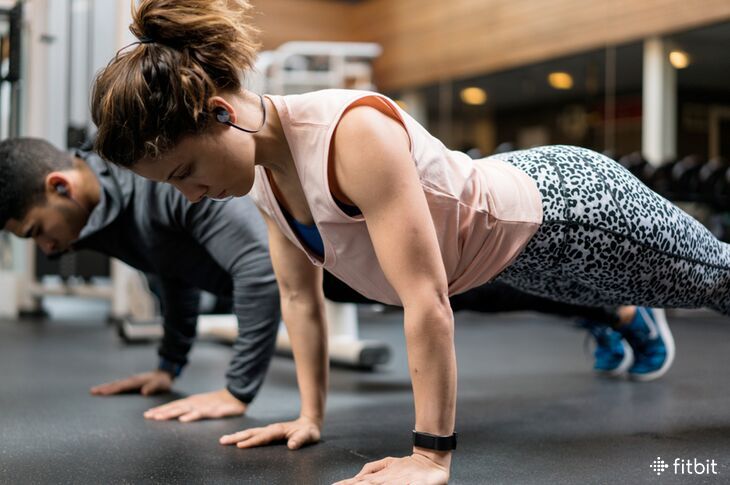
If you haven’t yet worked your way up to doing a full push-up, don’t fret. You might just be doing the wrong exercise progression. Many people start out by doing a modified push-up from their knees, but that’s not likely to help you develop the strength you need, say experts. “Doing push-ups on your knees only addresses half the body,” says Gregg Cook, personal trainer and group fitness coach at Equinox Fitness in New York City and co-founder of the well-being company Deep Health Evolution. “A standard push-up integrates so many more muscles than that; you get your glutes and quads involved, too.”
So how do you really go from “can’t do one” to “just cranked out 10”? Break the push-up down into smaller, more manageable moves. “A big part [of being successful] is teaching the nervous system how to perform a push-up,” says Cook. “It’s about getting in the groove and getting the movement pattern down.” Think about it like walking in a forest, he adds: “The first time you do it, there’s no path. The second time, there’s a little bit of one. The more frequently you do it, the more ingrained it becomes.”
Ready to master this gym-class classic? Give Cook’s simple three-step push-up sequence a shot.
Nail Your First Perfect Push-Up
Work your way up to doing a few sets of 10 reps every other day, starting with step one. Don’t progress to the next step until you’re able to comfortably do the movements outlined below.
Step One: Practice the first half
“Start in a high-plank position and lower yourself all the way down to the floor,” says Cook. The lowering, or eccentric, phase of the push-up stimulates your muscle cells. Because eccentric contractions produce greater force than concentric contractions, practicing the eccentric phase of a push-up will help your muscle get stronger and more powerful. “You actually create more stimulation of muscle cells on the lowering phase,” says Cook.
Then get up however you need to. “Two popular options: Keep your knees down and push back up or get into a child’s pose and then come into a plank. When lowering yourself to the floor gets easier—i.e. you’re not just plopping down those last few inches—move on to step two.
Step Two: Add in a mini push-up
Start in a high-plank position again, but this time, as you lower yourself to the floor, try stopping three-quarters of the way down. At that three-quarters place, pause and push up a little bit. It’s OK if it’s just an inch or so at first. Then, continue the rest of the way to the floor. Move on to step three when you can do one mini push-up without breaking at your hips. “The key is to lock your hips and squeeze the glutes a little bit so the chest leads the way,” says Cook.
Step Three: Practice until it’s perfect
If your form stays strong, add more reps and depth to your mini push-ups. In a couple of weeks, if you’re still not able to do a full push-up, don’t sweat it. See how many more negative reps you can do or how much closer you can get to the ground without giving in. “Push-up progress is so individual,” says Cook. “It might take one person two weeks and another person six to 12. When you do get that first full push-up, celebrate that and turn it into two.”
This information is for educational purposes only and is not intended as a substitute for medical diagnosis or treatment. You should not use this information to diagnose or treat a health problem or condition. Always check with your doctor before changing your diet, altering your sleep habits, taking supplements, or starting a new fitness routine.

A Push up is THE achievement goal I have been unable to reach. As a 57 year old women with good fitness level over a long period of time I really want to achieve this goal and keep the strength to maintain ability . Thanks for the Tips – I am going to break that down and look at it logically and then set the goal to do. I’ll feedback in in three weeks time and tell you how I’m going.